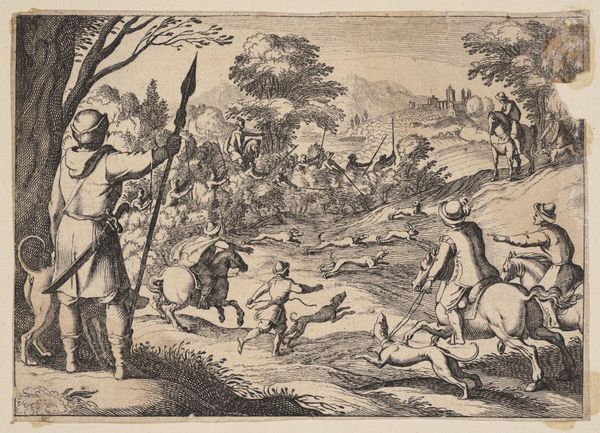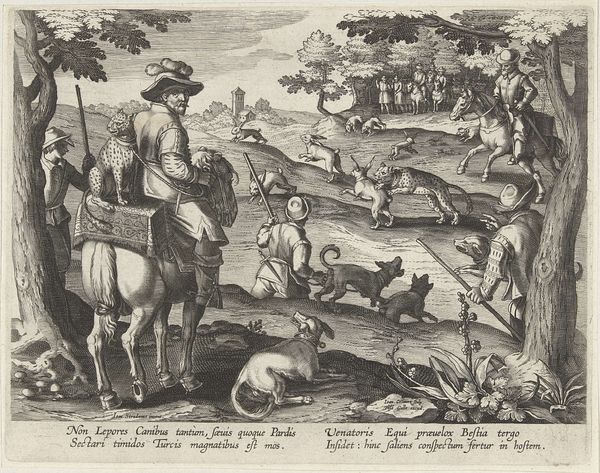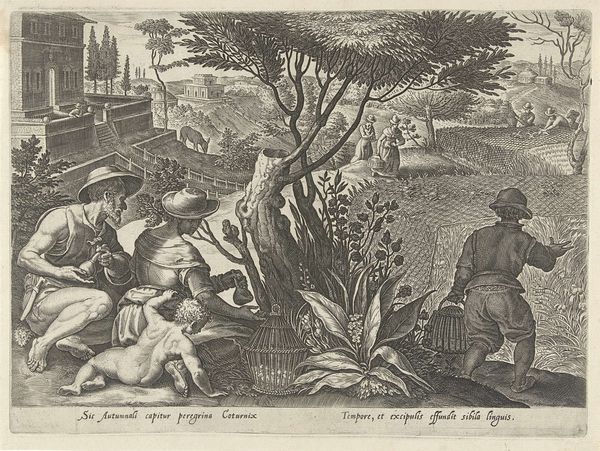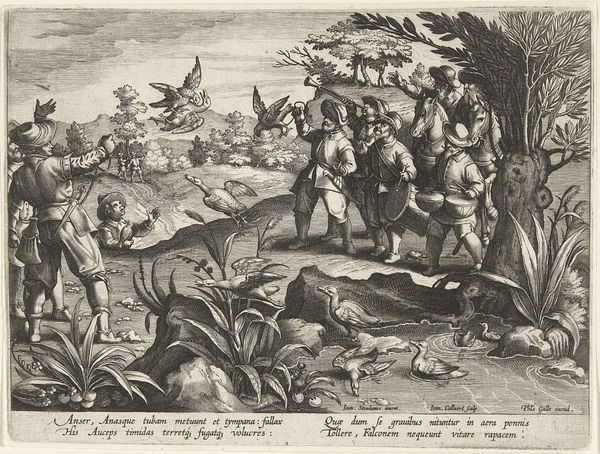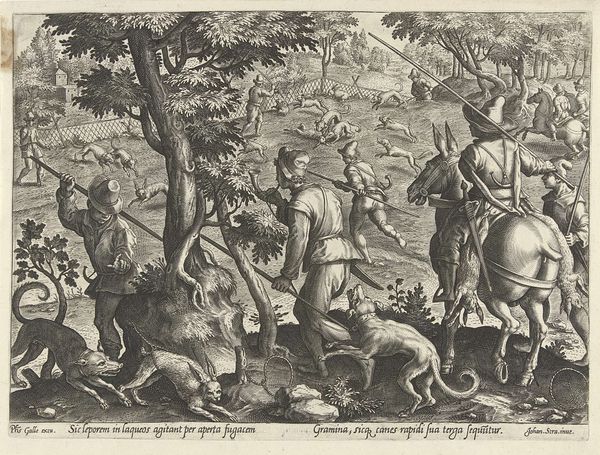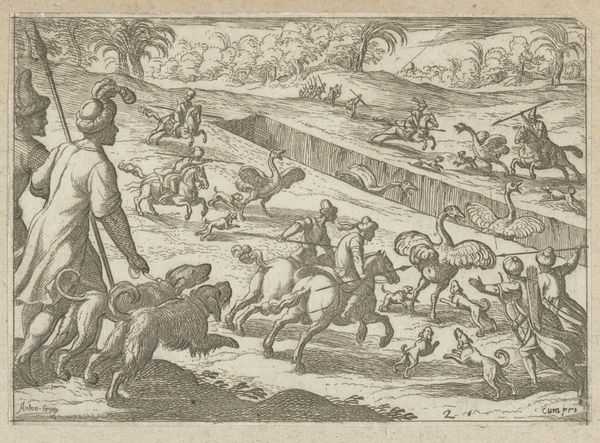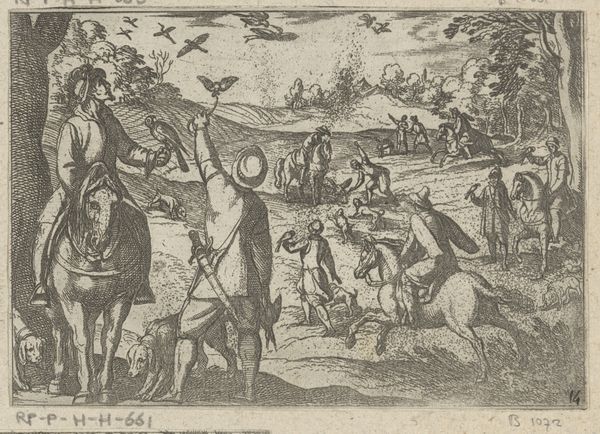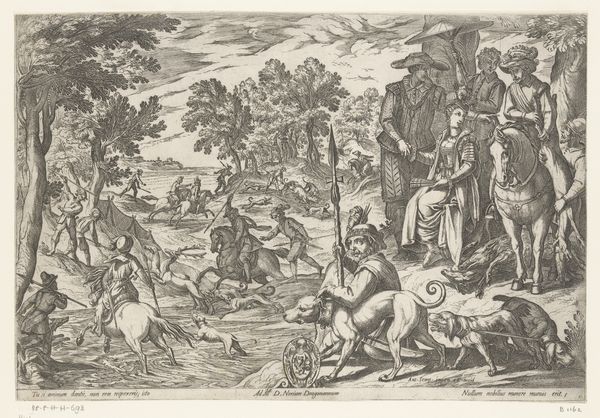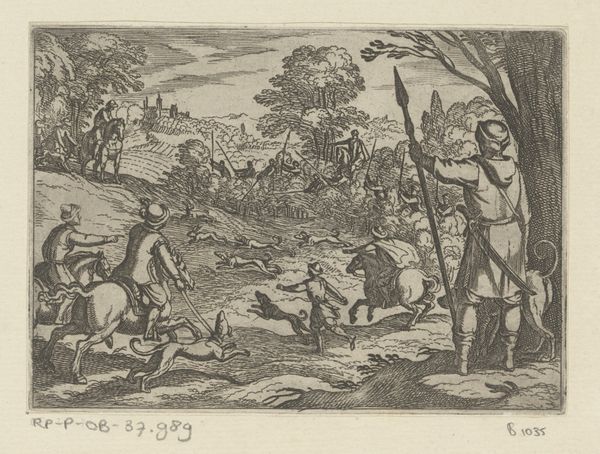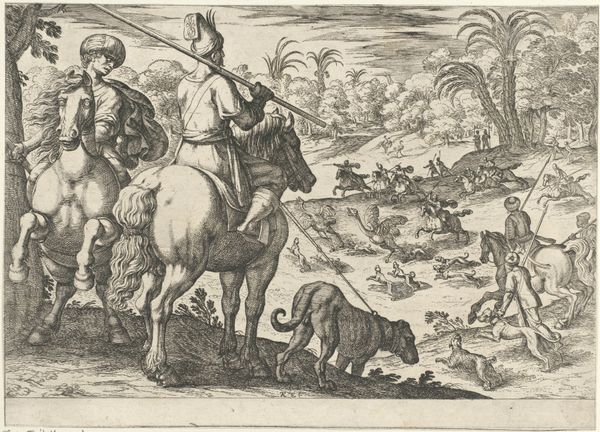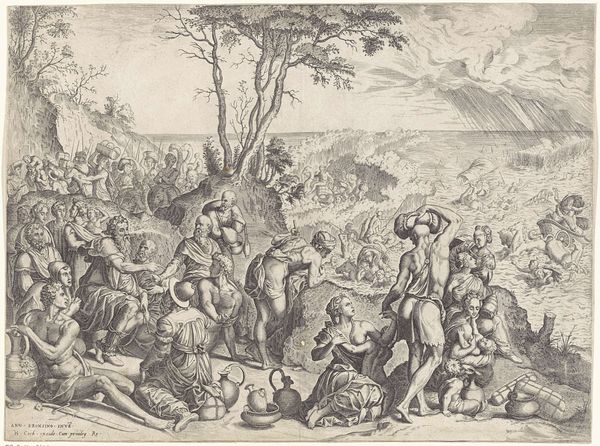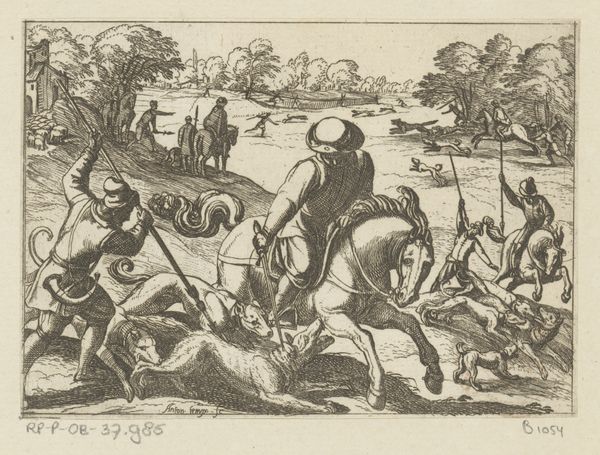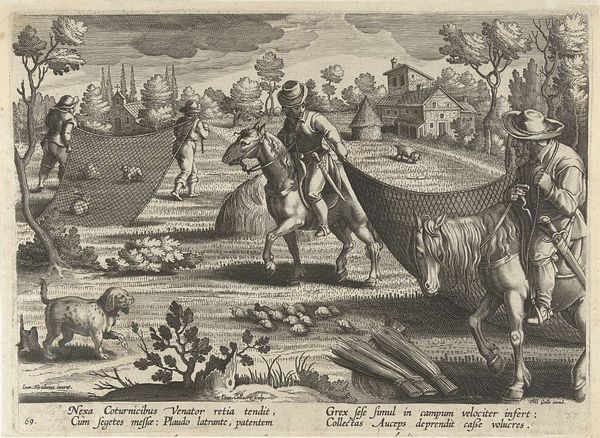
print, etching, engraving
#
narrative-art
#
dutch-golden-age
# print
#
etching
#
old engraving style
#
landscape
#
figuration
#
genre-painting
#
engraving
#
realism
Dimensions: height 215 mm, width 296 mm
Copyright: Rijks Museum: Open Domain
Editor: This is "Jacht op otters," or "The Otter Hunt," an engraving by Philips Galle from 1578, currently held at the Rijksmuseum. It’s fascinating to see such a detailed scene rendered in simple lines. The hunt itself looks so… well, chaotic. What kind of societal commentary might Galle be making here? Curator: The chaos, as you call it, is central to understanding the piece. Think about the role of hunting in 16th-century society. It wasn't merely about obtaining food. It signified power, land ownership, and control over the natural world. Consider, then, the way Galle depicts the hunters. Editor: They're not exactly presented as heroic figures, are they? Some look clumsy, others almost comical. Curator: Precisely! Is Galle celebrating their dominion over nature, or is he subtly critiquing their methods, even their motivations? How do you think the rising merchant class in Dutch society at the time would perceive an image like this, especially considering debates around land use and access to resources? Editor: I hadn’t thought of it that way, but now that you mention it, perhaps the slightly absurd portrayal challenges the traditional aristocratic association with hunting. It’s like Galle is democratizing the image, making it less about noble privilege and more about everyday activity. Curator: That's a compelling interpretation. Galle's prints often circulated widely, reaching diverse audiences. So, how might this accessible depiction of hunting – otter hunting specifically – shape the perception of nature and its resources? Think about the burgeoning interest in natural philosophy and early scientific inquiry at the time. Editor: It adds another layer, showing how economic activities were increasingly intertwined with observation and exploitation of the natural world. This makes me rethink its simple presentation. Curator: Indeed. Looking at art through the lens of social and cultural history really helps to see it as part of ongoing conversations about power, access, and representation.
Comments
No comments
Be the first to comment and join the conversation on the ultimate creative platform.
